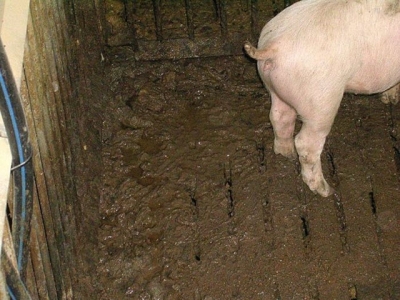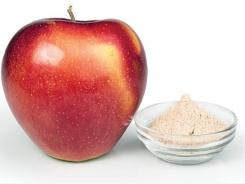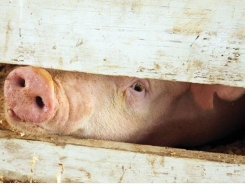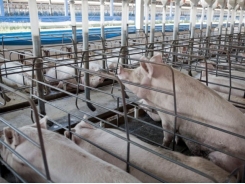Pig gut health at weaning impacts finishing performance

Damage to the gut at weaning has impacts far beyond the nursery. | Ioannis Mavromichalis
Finishing success begins on day one. Every pound at weaning correlates with nearly two pounds at end-of-nursery and nearly four pounds at end-of-finishing — success that is possible due to improvements in the pig’s gut health.
Pigs that are fed and managed properly during the weaning transition can better reach their full potential at finishing. Research from the Purina Animal Nutrition Center verifies that gut health at weaning is a strong predictor of lifetime performance. Results indicated every pound at weaning correlated to nearly 4 pounds at finishing. Simply put, strong performance at weaning can support heavier pigs at finishing — and it all begins in the pig’s gut.
The digestive evolution
After a pig consumes feed, digestion impacts how quickly the pig gains weight. Pigs that are able to digest nutrients more efficiently can put on more pounds quicker. The key player in nutrient absorption is the small intestine. After feed is broken down in the pig’s stomach, it enters the small intestines area where nutrients are absorbed via thousands of finger-like projections called villi, which line the inside of the small intestine.
As shown in Figure 1, longer, well-formed villi help pigs absorb nutrients at higher levels. Pigs with shorter villi have less surface area for potential nutrient absorption. A healthy small intestine with well-developed villi positions a pig to transition smoothly through weaning and go on to reach maximum potential through finishing. Unfortunately, if weaning is stressful, it can drastically impact villi length and development. In a study conducted by the Cambridge Institute of Animal Physiology, villi length, which did not change significantly in unweaned piglets 4 to 6 weeks after birth, was cut in half in the five days after weaning.

Figure 1 shows that a healthy gut is lined with finger-like villi that maximize nutrient digestion and absorption. This feature is impaired in sick animals with damaged gut.
Impact to lifetime performance
Damage to the gut at weaning has impacts far beyond the nursery. A recent study at the Purina Animal Nutrition Center shows that weaning performance can be an indicator of lifetime performance. During the 18-month study that included 1,770 pigs, researchers documented weights from wean to finish, including each diet change in the nursery and growing/finishing periods. See Figure 2 for what they found.

Figure 2 outlines a recent study from the Purina Animal Nutrition Center showing that weaning performance can be an indicator of lifetime performance.
Supporting a strong start
Performance at weaning is the foundation of lifetime performance. Therefore, supporting villi health during weaning is an important step in raising productive pigs. Feed consumption and proper hydration support healthy villi development for maximum nutrient absorbtion at weaning, which opens the door to more marketable pounds at finishing.
How can producers help villi stay healthy and pigs digest feed efficiently? The answer is simple: Keep pigs eating and drinking from day one through finishing. Here are some ways to encourage that:
- Flavor matters. Choose a feed program that mimics the taste of sow’s milk to help young pigs transition onto dry feed. Be sure your feed program uses consistent flavoring ingredients between production stages. Consistantly flavored feed can encourage consumption. This can help pigs avoid performance slumps during and after transitions or exposure to other stress factors.
- Flavor helps pigs drink more, too. Research indicates pigs prefer the flavor of water with electrolytes as opposed to plain water. In a study evaluating the first three days post-weaning, early-weaned pigs drank four times more water with electrolytes (3.748 L/pig/24h) compared to untreated water (836 mL/pig/24h). Whether you prefer to mat-feed gel or add electrolytes to a water medicator, choose a product that provides sodium, chloride, magnesium, vitamins and pH acidifiers. These nutrients help balance the gut so pigs can keep eating and drinking aggressively. Feed consumption is highly correlated to water consumption, so encouraging water intake has multiple benefits.
- Be ready before your pigs are. Place feed and check waterers before pigs arrive in new facilities. Test the water quality, temperature and flow rate prior to introducing pigs. Provide one waterer for every 10 pigs. Some pigs will need to be shown where to find the waterer when they arrive.
Dari Brown, Ph.D., is senior director of technical services with Purina Animal Nutrition.
Related news
Tools

Phối trộn thức ăn chăn nuôi

Pha dung dịch thủy canh

Định mức cho tôm ăn

Phối trộn phân bón NPK

Xác định tỷ lệ tôm sống

Chuyển đổi đơn vị phân bón

Xác định công suất sục khí

Chuyển đổi đơn vị tôm

Tính diện tích nhà kính

Tính thể tích ao




 Gene-edited pigs resistant to PRRS virus, study finds
Gene-edited pigs resistant to PRRS virus, study finds  Team demonstrates perils of using high levels of…
Team demonstrates perils of using high levels of…